What the Flowering Trees Know
Beauty and time are equally fleeting; being present to both is the gratitude that saves me.
My sister and I are debating the merits of cherry trees. We are in her truck, driving the back roads of lower Delaware, off to see a man about a lamp repair three towns over. It is too early for corn, of course, but the soybeans are a foot high in places, great swaths of emerald green out my window, running from one stand of loblolly pines to the next. We pass the weathered remains of low-slung chicken houses and once proud farmhouses, and we gape at the vast, dusty clearings pocked with piles of fallen timber where billboards are inevitably erected, announcing the construction of yet another new housing development. They have names like “Beach Plum Preserve” and “Horseshoe Haven” and “Marsh Meadows” and “Tidewater Creek.”
It is a strange mix of our childhood Delaware and the modern reality that my sister has retired to and that my father accepts like only a 93-year-old can. I have a hard time with the new development. I want to go back in time.
—
My sister thinks cherry trees are messy and fussy. Maybe just a little too Lucille Ball, not enough Audrey Hepburn. She’s more of an Eastern redbud kind of gal. She planted a redbud variety called Carolina Sweetheart in her front yard. Redbuds bloom in early spring on elegant spindly branches, their petite watermelon-pink flowers visible as thin ribbons of color from afar.
Cherries only bloom for a week. Why would you want a tree that only blooms for a week, some would say. But isn’t the beauty worth it, I say? And isn’t all beauty ephemeral? Isn’t the sole purpose of beauty to fix you in the present moment, to distract your mind from loitering in the past or wandering into the future where it can only get into trouble? Science says the act of observing a single flower can lower your cortisol level. What about standing under a whole bough of fluffy cherry blossoms? What will that do for you…for me?
These are important questions – for me, at least. Last week I de-stressed by arranging flowers. But now that I have traveled to Delaware and let my guard down, I realize I need something bigger, something the size of a tree, to treat the accumulation of months-long stress.
I have been daydreaming of flowering trees. In my dream there is a neat little row of them down in our field. They provide a bit of architecture, separating the production garden from a wilder “back room.” Best of all, they offer a badly needed boost of spring color. But what kind of flowering trees are they? Cherries, dogwoods, redbuds, crabapples, fruit trees?
—
We arrive at the lamp man’s twin-gabled antebellum house right in the middle of this historic town. The curtains are drawn; inside, the house is dark and filled with extinguished light fixtures. There is a workbench in what used to be the kitchen. A soap opera murmurs on the TV. I feel like I’m in a Eudora Welty short story, and that all may not be quite what it seems.
My sister chats politely with the lamp man while she writes him a check and I case the joint discreetly without moving. I can’t help it. My pores are picking up mothballs and oil paint and old telephone books. He hands us the lamp and some business cards, and quickly we are back out in the sunlight on the cracked sidewalk riddled with pushy dandelions.
We start home by a different route and wind up, perhaps inevitably, detouring for a stop at a plant nursery. In our family, we do not drive past plant nurseries. It’s a disease. (Okay, one of the family diseases.) It’s a good thing Dad is not with us on this particular adventure, or we would not get home before dark.
At this sprawling nursery, which appears to cover more ground than the entire town of Harbeson, we walk up and down the tidy rows of shrubs and trees. We investigate dogwoods. We can’t find the one that Dad loves, the one called Appalachian Spring. Dad has told us the story at least a hundred times of how this variety was discovered alive in the mountains in a grove of wild dogwoods which had been decimated by disease. The lone survivor was taken to the University of Tennessee to be propagated.
We do find a few pretty pink Cherokee Braves and a nice selection of Scarlet Fire kousa dogwoods. (Dad has one of those.)
We look at a magnolia named Jane. And something called a Japanese lilac tree.
Of course, I can’t really buy a tree in Delaware (though I wish I could, because it would be so much cheaper than on the Island). We couldn’t fit one — much less three — trees in the Subaru. But research is helpful.
I’m entranced by all the color in the nursery – the rows of ceramic pots, the upside-down umbrellas hanging from the greenhouse ceilings, the brightly colored annuals in planters.
I help my sister pick out a pot, and then wander around while she fills her cart with butterfly bushes.
—
On the next leg of our journey, we take a wrong turn and wind up traversing Gravel Hill Road three times in an attempt to get back on Route 5 and find the antique store we originally had planned to stop in. At times it feels like the three-hour tour on the S.S. Minnow, minus Gilligan, the professor and Mrs. Howell. But we laugh.
—
At last we arrive home, where Dad has laid out our well-worn tree bible (The Tree Book: Superior Selections for Landscapes, Streetscapes, and Gardens, by Michael A. Dirr & Keith S. Warren) on the dining room table, open to the page about Prunus Akebono, the popular Japanese cherry that is one of the stars of Washington’s Tidal Basin cherry blossom display every spring. I saw it in a nursery on the Island and asked him if he thought it would work for us. Dad also left me a magazine article about the Seven-Son Flower, which is actually a small tree. He will want to discuss both in detail when he wakes from his brief nap after a day of building a new walkway in the garden.
Here in Delaware, where I arrived stressed and fell into the arms of my garden-obsessed sister and father, the talk of trees has consumed us and comforted me. Even my husband has been caught up in the pursuit of the ideal flowering tree, voicing his love of magnolias and his heretofore unknown preference for white dogwoods over pink.
—
He and I lace up and head out for our late afternoon walk around the neighborhood. All the cherry trees are in bloom. Most of them are the double-flowered variety called Kanzan, which produces an almost embarrassing profusion of pink blooms. I keep stopping to take pictures of them or just to stand under the boughs and stare up at all that pinkness. How amazing, all this loveliness.
Some of the petals are starting to drop. I notice turkey vultures circling overhead. They appear frequently when I’m in Delaware to remind me that time and beauty are both fleeting.
My husband patiently walks up the block and back, waiting for me to process.
I think this: That a day spent with my sister is worth a thousand cherry trees blooming at once. And this: That I am not ready to go back to the Island yet, to leave my crazy plant-obsessed family, though I know we must return tomorrow. And this: If there is one thing I must take with me, it is to remember that when I am all knotted up, my instinct to move towards beauty is the right one; with its gift of presence and gratitude, it will save me every time.
Loveliest of Trees
Loveliest of trees, the cherry now
Is hung with bloom along the bough,
And stands about the woodland ride
Wearing white for Eastertide.
Now, of my threescore years and ten,
Twenty will not come again,
And take from seventy springs a score,
It only leaves me fifty more.
And since to look at things in bloom
Fifty springs are little room,
About the woodlands I will go
To see the cherry hung with snow.
— A. E. Housman, from A Shropshire Lad, 2
Previous Posts
🌸🌳





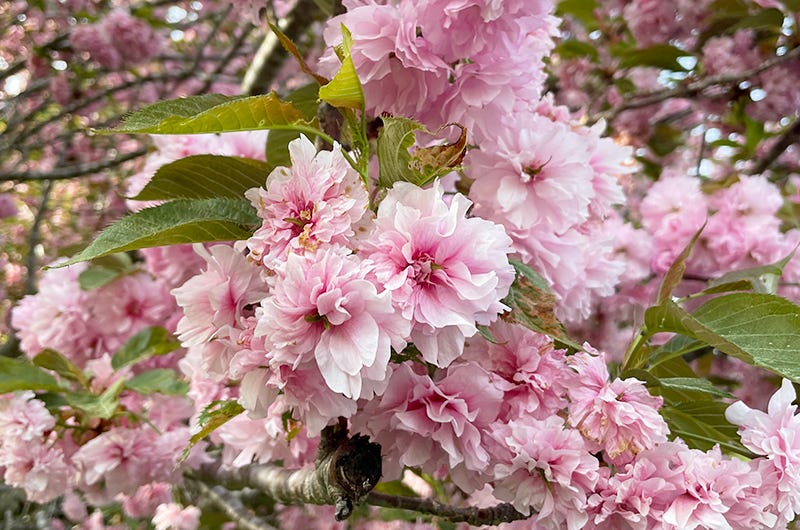
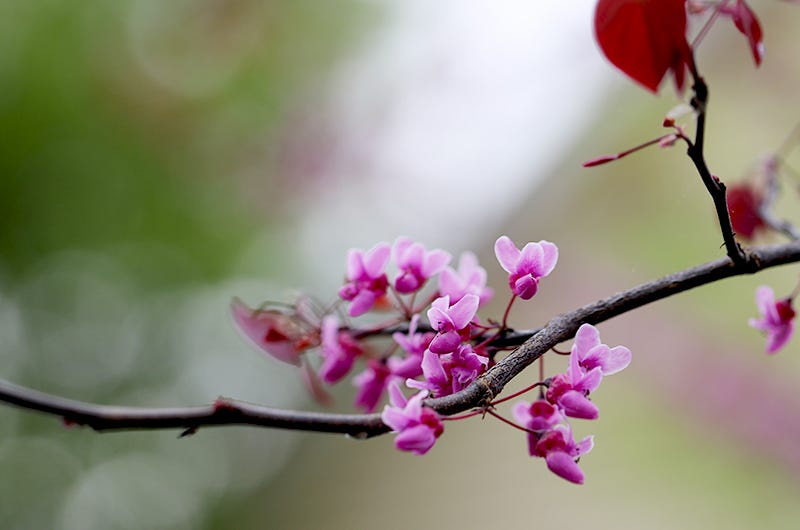
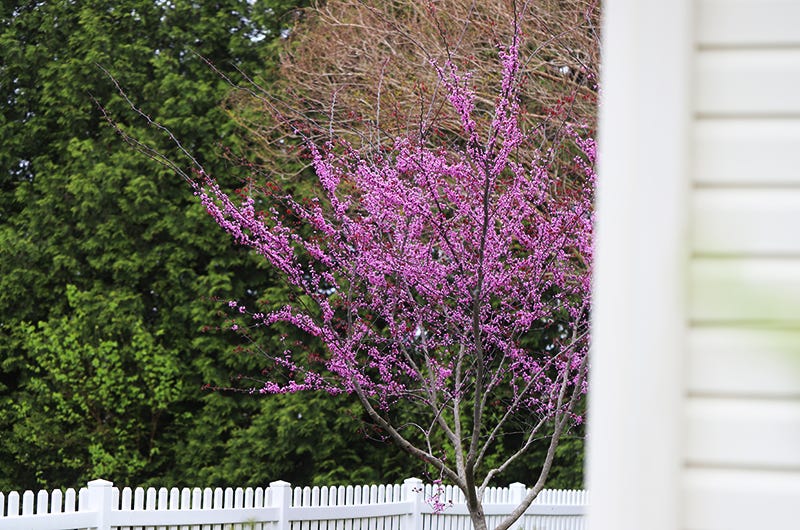
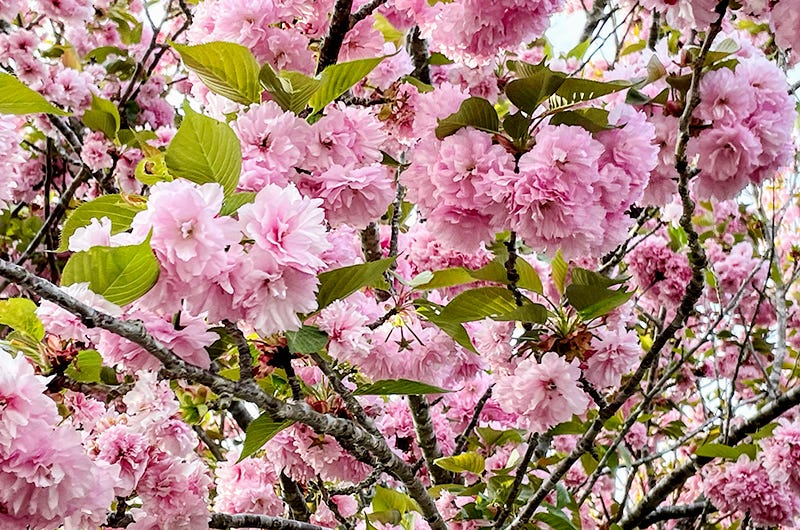
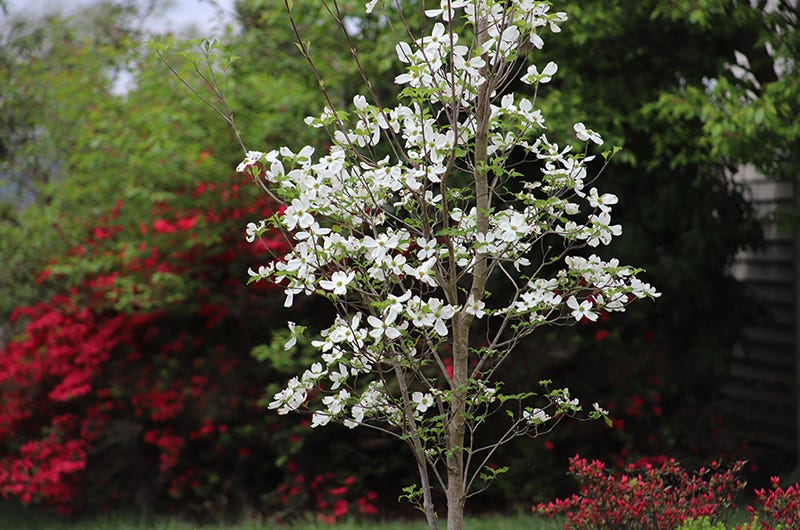
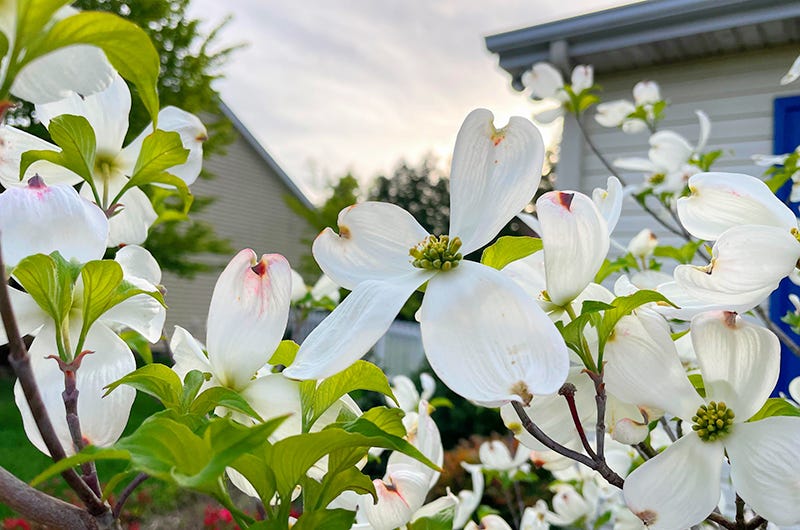
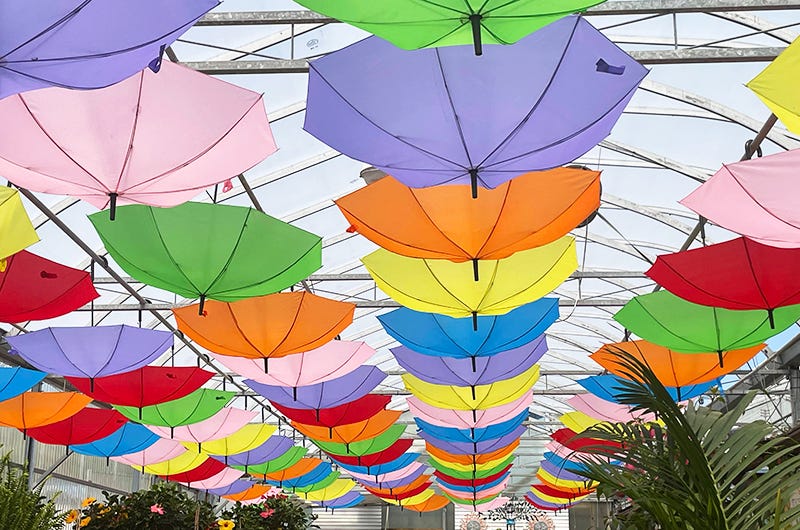
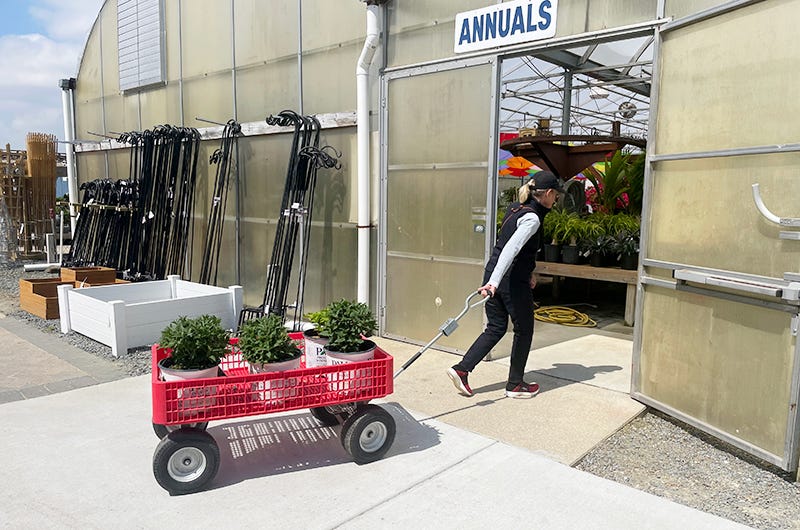
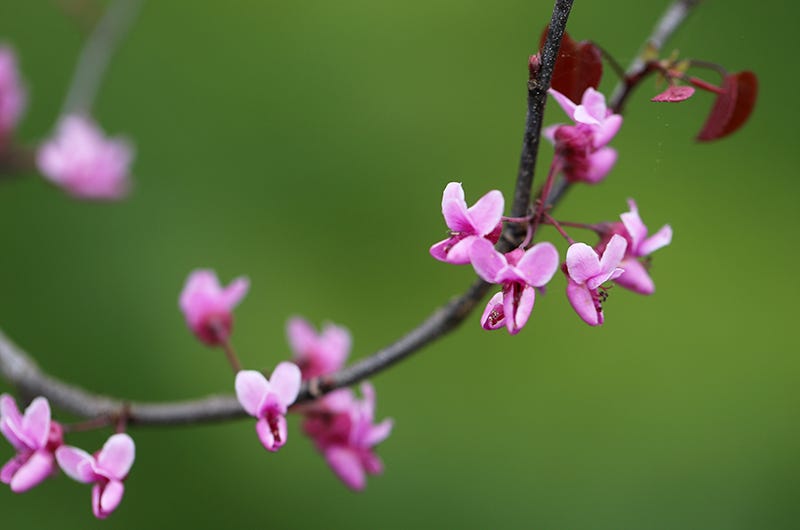
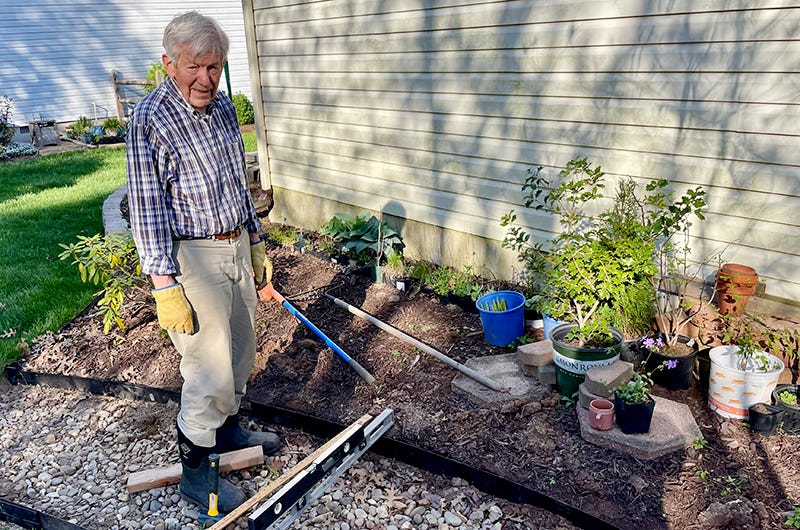
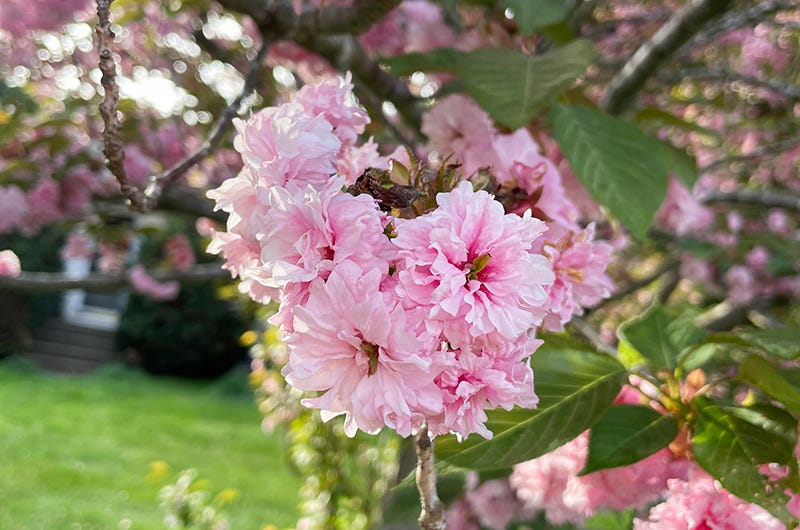
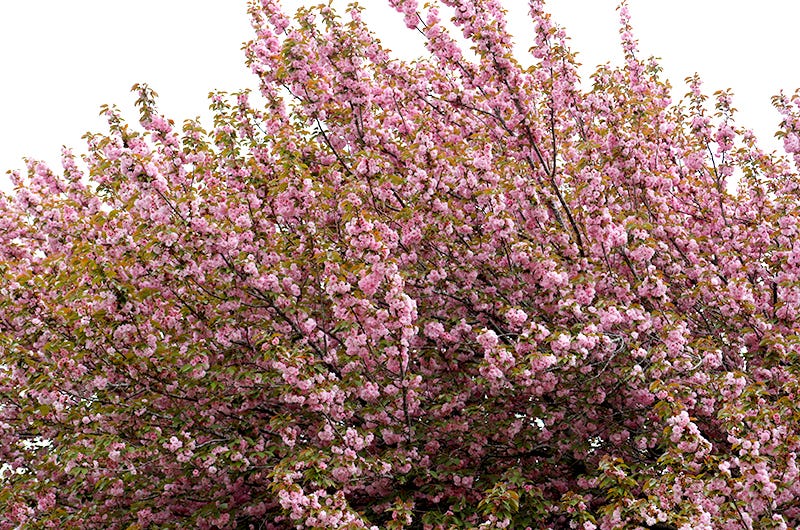
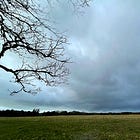

Oh that sounds beautiful Stephanie! Glad you are taking notice of it all. Ii IS a balm! 🌱
Beautiful. We are a stop-at-nurseries family, too. The time spent with your sister snd father sounds like an absolutely perfect day.
Here in Colorado, the redbuds, service berries, crabapples and Chanteclair pears are in full bloom, even though my dogwood is just beginning to bud out. The beauty of nature really is a balm for the soul, isn’t it?